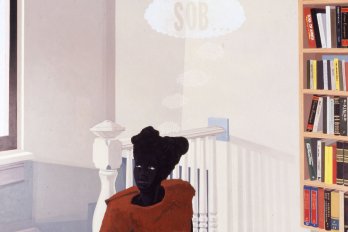the hague—When Sabine Kupferberg, one of the finest contemporary dancers of the Nederlands Dans Theater (ndt), reached the age at which dance steps that had once been easy increasingly became difficult, she faced the same choice that awaits all dancers: retire from the stage and teach, or find a new profession.
It’s an old story. Dance is far more physically demanding than most professions, and most dancers, by their late thirties, are dealing with a legacy of endless injuries. Kupferberg was no different, but she was not ready to end her career. It was around this time that French dancer Gérard Lemaitre, who had stopped performing a decade earlier, spoke with Kupferberg about starting a company for ageing dancers. Kupferberg loved the idea, as did her husband Jirí Kylián, ndt’s artistic director at the time.
Kylián launched ndt iii, the world’s first dance company designed specifically for dancers over forty. Now in its fifteenth year, the company has toured the world and featured some of the greatest dancers and choreographers of our time, including Karen Kain (who retired from the National Ballet of Canada at forty-six) and American experimental director Robert Wilson.
The dance world has opened its arms to the company and its vision, and similar companies have sprung up in London, New York, and in Toronto, where choreographer Claudia Moore, now in her fifties, founded the Older & Reckless series.
Kylián, at fifty-seven, has a gentle face and thinks carefully before speaking. He has choreographed the majority of ndt iii productions and says that “working with ndt iii is like thumbing through books in an old library. The human body is blessed with the ability to collect and store experiences. The ndt iii dancers show this wealth.”
While tours de force performances may no longer be possible for older dancers, their theatrical capabilities tend to deepen with age. An older dancer’s simplest movements—just standing or walking onstage, for instance—are often idiosyncratic and display a confidence that is impossible for most young dancers to achieve. “Young dancers are always proving themselves, always competing,” explains Kupferberg. Now fifty-three, she says she is no longer compromised by competitive pressures.
Kylián, too, recognizes a vulnerability in older dancers that translates into something very powerful onstage. The dancers are reaching a turning point not only in their careers, but also as individuals, he explains. By this age, they have experienced life’s trials and delights, and can exhibit a forceful maturity. Every step they take has a history, and many of ndt iii’s productions reflect this, exploring themes of mortality, grief, and vulnerability. As an audience member, one cannot avoid realizing that this is a swan song of sorts.
Last summer, at the ndt iii’s studios in The Hague, dancers David Krügel and Gioconda Barbuto (who is Canadian-born and trained) were rehearsing the production Birth-day. Both dancers are in their late forties but they remain fit and move with great grace and articulation. There is also something essentially different about them. When a young male dancer lifts a young female dancer off the floor, it is intended to appear effortless; and when a dancer sails across the stage there is a moment when it appears she might not land. For young dancers, the floor beneath their feet is the enemy. But Krügel and Barbuto appear grounded, as though they have created a connection to the surface beneath them. After decades of dancing, they have made peace with the floor.
As Barbuto rehearses a series of steps while she waits for the music to begin, it is clear that she loves her craft. She has an elegant face and a still-slender body but she is not the dancer she was twenty years ago. There has been a metamorphosis, like the heroine of Swan Lake who becomes a swan, then later, finally and fleetingly, human again. Even as Krügel turns and lifts Barbuto into the air, she is entirely aware of the ground that waits beneath her.




